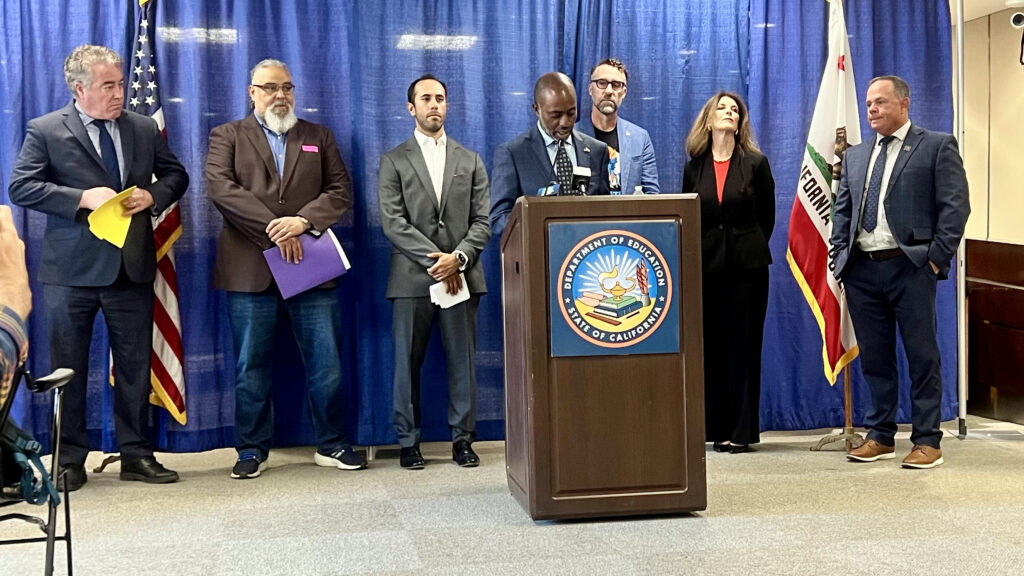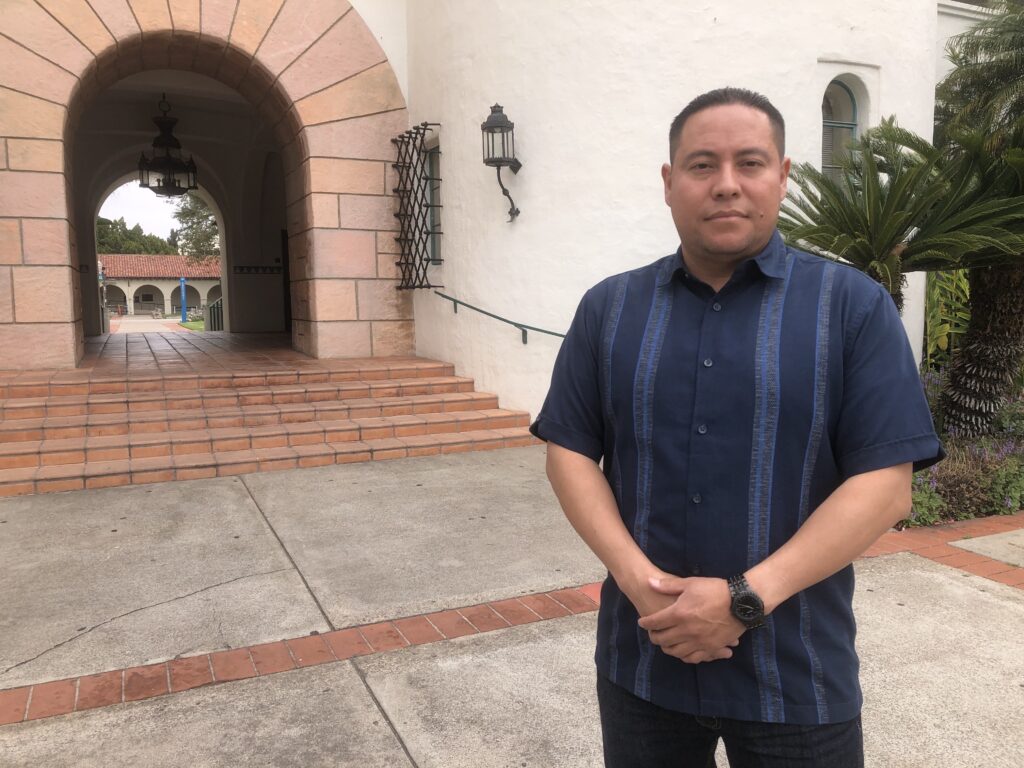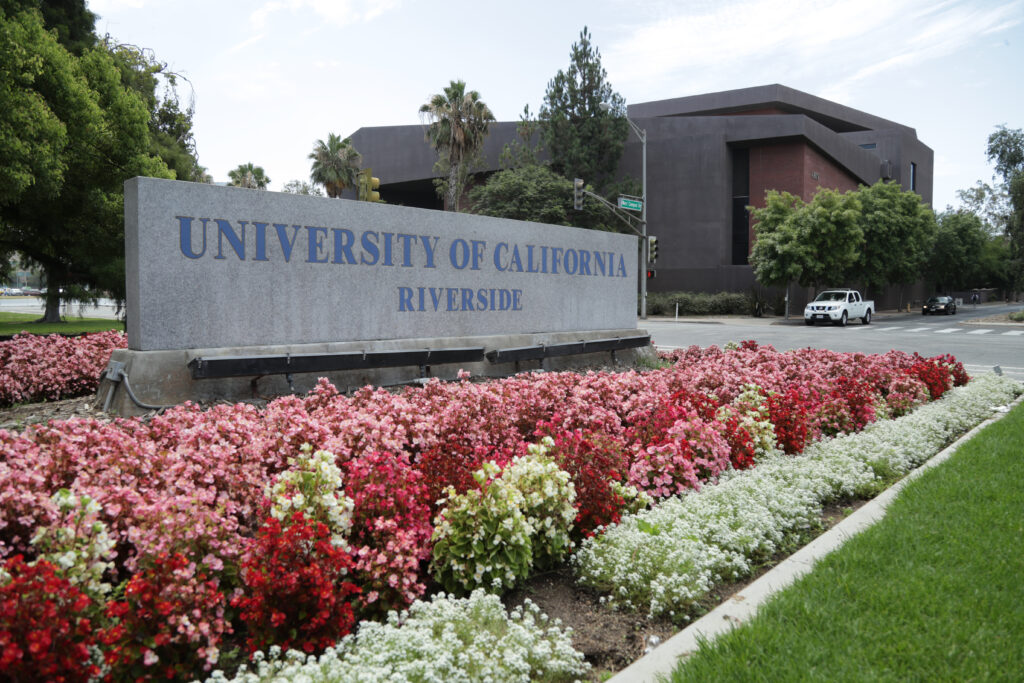
California State Superintendent of Public Instruction Tony Thurmond speaks at a press conference Tuesday, July 1, 2025.
Credit: Kindra Britt/California County Superintendents
Top Takeaways
- The Trump administration announced it would withhold $811 million in grant funding the day before the money was to be released.
- The grants fund teacher training, migrant education, school enrichment courses, summer school and after-school programs, and support English learners.
- California education leaders call the funding freeze a political move that hurts the neediest children.
The Trump administration’s decision to withhold $811 million in grants to California schools is a political move that weaponizes federal funding, California education leaders said at a press conference Tuesday.
California isn’t the only state in President Donald Trump’s crosshairs. The White House has frozen a total of $6.2 billion in grants that Congress allocated to support English learners, teacher training, after-school programs and migrant education in schools in every state.
State departments of education were notified of the funding freeze in an email sent on Monday, just a day before the money was scheduled to be released to school districts. The 84-word message said that the federal grants weren’t “in accordance with the President’s priorities,” said California State Superintendent of Public Instruction Tony Thurmond at the press conference.
The president intends to withhold the funding approved in the 2024-25 federal budget while the grants are reviewed, according to Politico. In the meantime, Congress is set to approve a budget for 2025-26 that could eliminate the grants altogether or lump them into a block grant.
“The president and his administration continue to pick on and bully those who are the least among us — students, those who rely on health care, those who rely on the federal government to have a chance at a great education and a great life,” said Thurmond, flanked by the leaders of various state education organizations. “And we won’t stand for it. It will not happen on our watch.”
The loss of grant funding will impact students across the state, “in red and blue counties, in rural and urban areas,” said David Goldberg, president of the California Teachers Association.
Among the programs at risk are Supporting Effective Instruction grants to improve the quality of the nation’s educators; 21st Century Community Learning Centers, which fund high school extended-learning programs; English language acquisition; migrant education; and Student Support and Academic Enrichment, which funds music, technology and other programs schools can not afford on their own.
Although the federal grant funds are only a small portion of the $8 billion in federal funding California receives for education, their sudden loss is a major disruption for school districts that have already budgeted funds for the upcoming school year.
Freeze unravels school funding plans
The U.S. Department of Education action will withhold $110 million from Los Angeles Unified, the state’s largest school district, said Superintendent Alberto Carvalho on Tuesday.
“The majority of funds are targeting student populations that have some degree of association with fragile communities, and certainly, immigrant communities,” Carvalho said. “And, all this is happening today, as summer school continues, and (we) have immigration enforcement actions around our schools, spreading fear and intimidation.”
LAUSD serves the country’s largest population of immigrant children and English learners, including through federally funded programs like the Migrant Education Program, which provides additional support for children of migrant agricultural workers.
LAUSD recently approved an $18.8 billion budget that includes state and federal funding for the upcoming school year.
“The vast majority of districts across the state have already approved budgets, and the (Trump) administration knows very well what they’re doing,” Carvalho said. “They’re creating a disruption to the orderly operation of school districts by imposing a potential reduction after the approval, which would force us to reopen the books.”
Carvalho said the district has “the reserves necessary to fill the gap in the short term,” caused by the $110 million rescission, and will not make immediate reductions to personnel or programs.
To prevent long-term cuts, he said the district will join the expected legal action by California Attorney General Rob Bonta in hopes of an injunction and the release of withheld funds.
Other districts, such as West Contra Costa Unified in the Bay Area, will have a more difficult time managing without the federal funds. The district was able to approve a balanced budget for the upcoming school year, but only by spending down its reserves, said board President Leslie Reckler.
The district has relied on the funding provided by the grants for years for a range of services, Reckler said.
The announcement comes as the district is still digesting the fallout from being informed by the U.S. Department of Education that a five-year $4.2 million federal grant it had been awarded to place mental health interns in several schools would be cut to only one year for $600,000. The department told the district that the grant was no longer “aligned with the current goals” of the administration.
Migrant education at risk
The Monterey County Office of Education operates several migrant education programs during the summer break. The programs are for students whose parent or guardian is a migratory worker in the agricultural, dairy, lumber or fishing industries and whose family has moved during the past three years for work.
The programs include academic intervention programs and tutoring to help students catch up with English, math, or other subjects; health services; family literacy programs for parents and guardians; and exchange programs for teachers from Mexico to support students who travel back and forth between Mexico and the U.S.
The Trump administration is withholding $121 million in grants for migrant education in California.
Constantino Silva, senior director of migrant education in Monterey County, said the county superintendent has said these programs will continue through July, even if federal funding does not come through. The county will either use leftover funds from the previous fiscal year or pull them from another source.
After July, he does not know how long programs will continue without federal funding, although the outlook is not good, he said.
State has 1 million English learners
Withholding $158 million in grants for English language acquisition could have a huge impact on California K-12 schools where 1 in 3 students speak a language other than English at home, Goldberg said.
Martha Hernandez, executive director of Californians Together, said the announcement that federal funding is being withheld for English language acquisition has districts scrambling to figure out how they will provide legally mandated services to English learners.
Administrators are frantic about what they’re going to do, particularly about staffing, because state law requires school staff to be notified in March if they are going to be laid off, she said.
“So now, having to think about, with declining enrollment and budgets already being tight, how are they going to possibly retain staff that have been paid for out of Title III?” Hernandez said.
Districts are still required under federal law to provide services to English learners to help them learn English and help them understand their classes, she said.
“It’s just an unconscionable blow to districts. To cut it on July 1, when the funding was supposed to be disbursed, is just really cruel,” Hernandez said.
Summer school, teacher training impacted
Several of the frozen grants could impact over 10,000 after-school and summer programs serving 1.4 million students, said Jodi Grant, executive director of the Afterschool Alliance. Many will have to close, leaving more children unsupervised.
“Parents across the country are counting on these programs to support their kids this summer, this fall, and throughout the school year,” Grant said.
The largest chunk of funding being frozen is $232 million from the Supporting Effective Instruction grant, which can be used to reform certification programs, support new teachers, provide additional training for existing teachers and principals, and reduce class size by hiring more teachers.
In February, the Department of Education threatened to withhold federal funding from schools and colleges that did not abandon “diversity, equity and inclusion” programs.
Last month, Trump also threatened to withhold federal funding from states or schools that allow transgender students to play sports on teams that align with their gender identity. The state went to court seeking to have the funds restored and won.
But even after California won cases against the Trump administration, it has sometimes had trouble drawing down funds from the federal government.
Thurmond said it may look for legal recourse again to restore the grant funding.
“We are going to push back on these egregious overreaches by the federal government and what we’re calling an illegal impoundment of federal education dollars,” Thurmond said.
In the meantime, David Schapira, chief of staff for Thurmond, recommended that school districts consult their legal counsel on how to proceed while the grants are in limbo and make individual decisions about what is best for their communities based on the information available.
Education leaders at the press conference had strong words about Trump’s actions. The president is willing to punish students in states that refuse to conform to his political ideology, Schapira said.
“The taxpayers entrusted their elected representatives in Congress to appropriate dollars that are meant to serve students across this country. Those should not be held hostage by the priorities of one person,” Schapira said.
Lasherica Thorton and Louis Freedberg contributed to this report.












